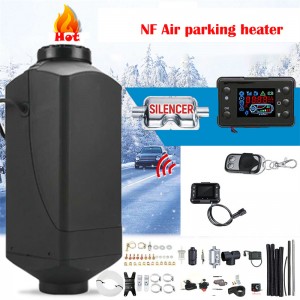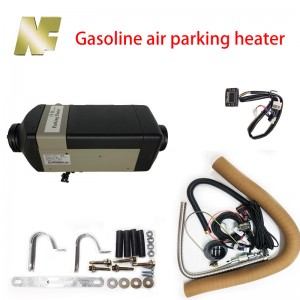The car fuel heater, also known as the parking heater system, is an independent auxiliary heating system on the vehicle, which can be used after the engine is turned off, and can also provide auxiliary heating during driving. According to the type of fuel, it can be divided into air gasoline parking heater system and air diesel parking heater system. Most large trucks and construction machinery use diesel gas heating system, and domestic cars mostly use gasoline water heating system.
The parking heater is an independent auxiliary heating system that provides preheating for vehicles, suitable for both gasoline and diesel models. Although different vehicle types are equipped with different heater models, each model offers its own distinct advantages.
During operation, the system draws a small amount of fuel from the tank into the heater’s combustion chamber. The fuel is burned to generate heat, which warms the engine coolant or air. The heat is then distributed into the cabin via a radiator while simultaneously preheating the engine. This process consumes a small amount of battery power and fuel—approximately 0.2 to 0.3 liters per heating cycle, depending on the heater’s power rating.
The parking heating system is mainly composed of the following five subsystems:
- Air intake system
- Fuel supply system
- Ignition system
- Cooling circulation system
- Intelligent control system
Its working process can be divided into five working steps: intake stage, fuel injection stage, mixing stage, ignition and combustion stage and heat transfer stage.
1. The centrifugal water pump starts pumping test run to check whether the waterway is normal;
2. After the water circuit is normal, the fan motor rotates to blow air in through the intake pipe, and the dosage oil pump pumps oil into the combustion chamber through the input pipe;
3. The ignition plug ignites;
4. After the fire is ignited at the head of the combustion chamber, it burns completely at the tail, and the exhaust gas is discharged through the exhaust pipe:
5. The flame sensor can sense whether the ignition is on according to the temperature of the exhaust gas, and if it is on, the spark plug will be turned off;
6. The heat is absorbed and taken away by the water through the heat exchanger, and circulated to the engine water tank:
7. The water temperature sensor senses the temperature of the water outlet. If it reaches the set temperature, it will shut down or reduce the combustion level:
8. The air controller can control the intake volume of combustion air to ensure the efficiency of combustion;
9. The fan motor can control the speed of the incoming air;
10. The overheat protection sensor can detect that when there is no water or the waterway is blocked and the temperature is higher than 108 degrees, the heater will be automatically turned off.
Post time: Feb-22-2023






